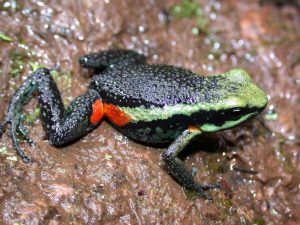Lima, Jul 26 (EFE).- Peru has 186 species of animals in danger of extinction, including 64 critically endangered species, according to the “Red Book of the Endangered Wildlife of Peru,” launched on Thursday by the National Forest Service and Wildlife (SERFOR) at the Lima International Book Fair (FIL).

A result of the long and meticulous work of researchers and specialists from both public and private sectors, the book also includes a list of 203 animal species made vulnerable as a result of decline in their population numbers.
Among Peru’s total of 389 threatened species are 120 amphibians, 122 birds, 23 invertebrates, 92 mammals and 32 reptiles.
The book includes for each species the justification of its conservation status, its distribution, its main threats and the recommendations to reduce these risks.
Many of these species are found only in specific localities of the South American country, such as Junin grebes
(Podiceps taczanowskii), which inhabit only Junin Lake, or Titicaca water frogs (Telmatobius culeus), which are found only in the world’s highest navigable Lake Titicaca, on the border with Bolivia.
Birds and amphibians are among the most threatened wildlife, with 122 and 120, respectively, since many of them have restricted distribution ranges; and in the case of amphibians, particularly, they directly suffer from the impacts of climate change, environmental pollution and some fungi.
Added to this are threats such as habitat loss and degradation, illegal wildlife trade and the presence of invasive alien species, among other factors.
The “Red Book” will serve as a tool for the authorities for establishing and implementing public policies that ensure the conservation and the responsible use of biodiversity and its ecosystems.
